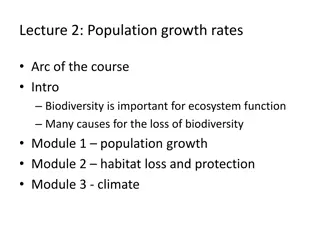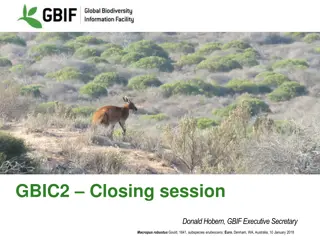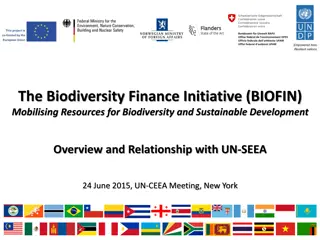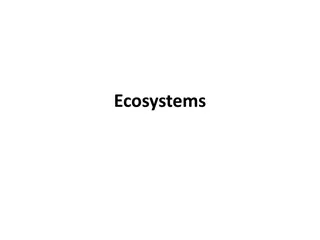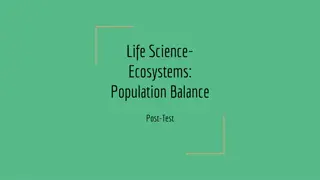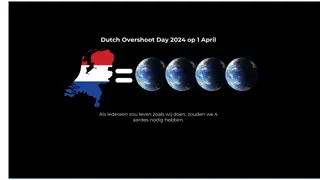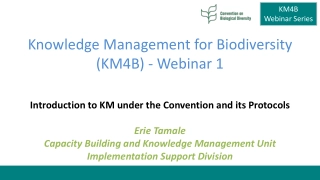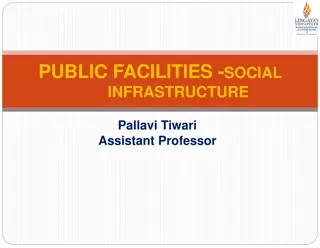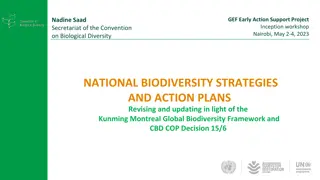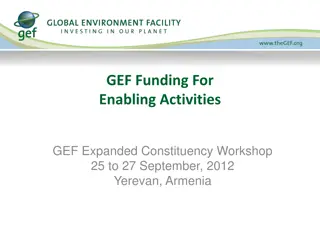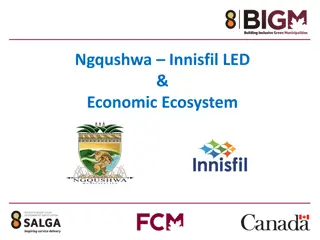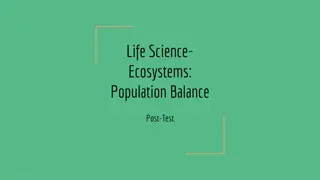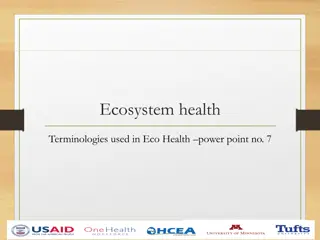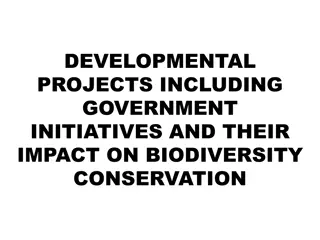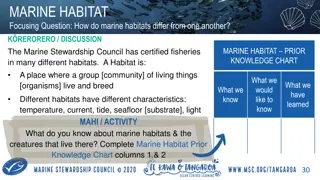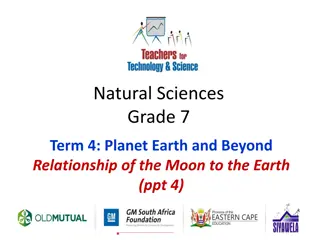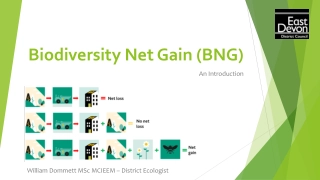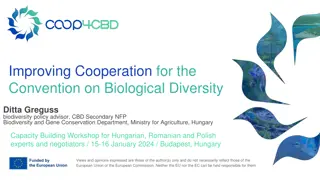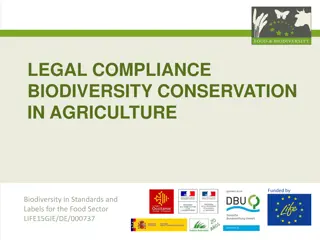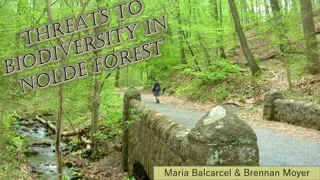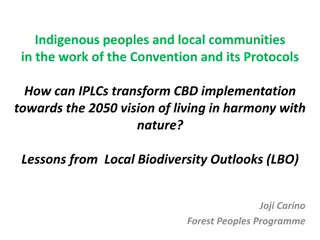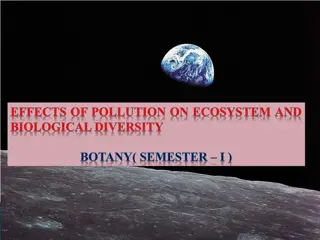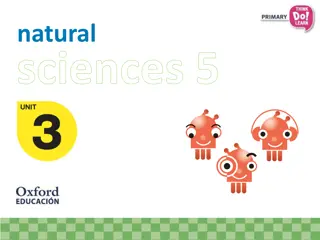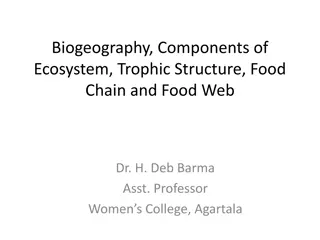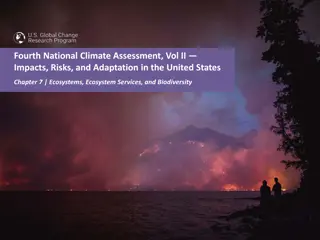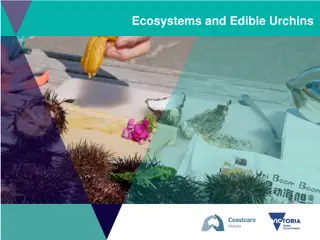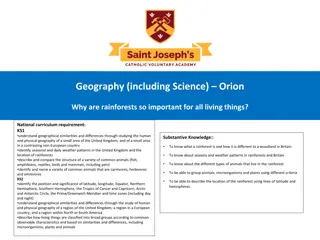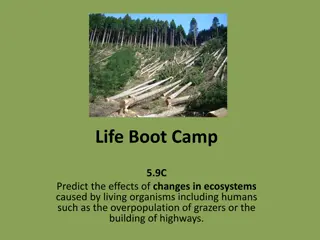Dimensions of Biodiversity - Exploring Earth's Diverse Ecosystems
The Dimensions of Biodiversity initiative, starting with a 10-year campaign, aims to characterize the genetic, functional, and ecological diversity on Earth through innovative research approaches. Funded projects include studies on tree communities, gut microbiota of bees, vulnerability of biodiversity to climate change, ecosystem productivity, and viral diversity in coral reefs. The ultimate goal is to achieve an integrated understanding of Earth's biodiversity through interdisciplinary research and global engagement.
Download Presentation

Please find below an Image/Link to download the presentation.
The content on the website is provided AS IS for your information and personal use only. It may not be sold, licensed, or shared on other websites without obtaining consent from the author. Download presentation by click this link. If you encounter any issues during the download, it is possible that the publisher has removed the file from their server.
E N D
Presentation Transcript
Dimensions of Biodiversity NASA Carbon Cycle & Ecosystems Workshop 6 October 2011 George W. Gilchrist, NSF DEB
Dimensions of Biodiversity A 10-year campaign to characterize the dimensions of biodiversity on Earth http://www.nsf.gov/pubs/2011/nsf11518/nsf11518.pdf Purpose: Phylogenetic / Taxonomic Integrative approaches Innovative concepts Rapid advances Target with an initial focus on areas where three key dimensions overlap Genetic Functional
Dimensions of Biodiversity FY2010 290 letters of intent 195 proposals reviewed in 2 panels 13 research awards and one joint U.S.-China IRCN $23.7 M committed from 2 BIO Divisions, GEO and OPP FY2011 116 proposals reviewed in 1 panel 11 research awards and one joint U.S.-China IRCN $26.6 M committed from 4 BIO Divisions, GEO, and OISE Panelist quotes This has pushed the community beyond business as usual. [Dimensions] will accomplish in 10-15 years what would ordinarily take 50 years
Dimensions of Biodiversity A Sampling of Funded Projects 1046113 IRCN: Diversity and Forest Change: Characterizing functional, phylogenetic and genetic contributions to diversity gradients and dynamics in tree communities Stuart Davies Harvard 1046153 Genomics, functional roles, and diversity of the symbiotic gut microbiotae of honey bees and bumble bees Nancy Moran Yale 1046408 An integrative traits-based approach to predicting variation in vulnerability of tropical and temperate stream biodiversity to climate change N. Leroy Poff Colorado State 1046121 Can evolutionary history predict how changes in biodiversity impact the productivity of ecosystems? Bradley Cardinale U. Michigan Ann Arbor 1046413 Shedding light on viral dark matter - genetic, taxonomic, and functional diversity of coral reef viromes Forest Rohwer San Diego State 1136586 Integrating genetic, taxonomic, and functional diversity of tetrapods across the Americas and through extinction risk Thomas Brooks NatureServe
Dimensions of Biodiversity Streams of activity 2020 Goals An integrated understanding of the key but unknown dimensions of biodiversity on earth Research Informatics and infrastructure that support accessible, interoperable information capability for dimensions of biodiversity Cyberinfrastructure Collections Digitization of collections and enhanced physical infrastructure to link to cyberinfrastructure and leverage the enormous investments of the past A diverse, interdisciplinary, globally-engaged, scientific workforce capable of transforming and communicating our understanding of biodiversity on Earth Workforce Scientific analyses and syntheses that generate and disseminate useful information for scientists, educators and decision makers Synthesis Approach: Planning & Partnering Base lining & synchronizing Assessing progress Aligning investments with emerging priorities
Coordinated Dimensions Activities: Research Workforce Collections Digitization Cyberinfrastructure Analysis and Synthesis Phylogenetic Dimensions of Biodiversity CONCEPTUAL TIMELINE Genetic Functional 2009 2010 2011 2012 2013 2014 2015 2016 2017 2018 2019 2020 FINAL MID-POINT CONFERENCE PI Meeting PI Meeting PLANNING ACTIVITIES CONFERENCE FY2010 Solicitation FY2011-2013 Research & Workforce Solicitation FY2014-2016 Research & Workforce Solicitation FY2017-2019 Research & Workforce Solicitation CI & Data Mgmt Guidelines Issued CI & Data Mgmt Guidelines Issued CI & Data Mgmt Guidelines Issued FY2010 Digitization FY2011-2013 Digitization & Infrastructure Activities FY2014-2016 Digitization & Infrastructure Activities FY2017-2019 Digitization & Infrastructure Activities Coordination and Partnerships: NSF, Interagency, International, NGO, Private Sector 2010 - 2011 Base lining Activity 2012 Progress Assessment 2014 Progress Assessment 2016 Progress Assessment 2018 Progress Assessment 2020 Base lining Activity Base lining and Progress Assessment: Crowd sourcing approaches
Dimensions of Biodiversity Recent and Upcoming Activities Sept. 2010: Design Charette at NESCent, Durham, NC to inform a research agenda http://www.nescent.org/cal/calendar_detail.php?id=562 Oct. 2010: Cyberinfrastructure workshop at Univ. of Wisconsin http://lter.limnology.wisc.edu/cidimensions/ 2010-11: Workshops in S o Paulo, Brazil to discuss potential partnership opportunities Summer 2011: Partnership meeting with National Natural Science Foundation of China and RCNs Winter 2011: Initiation of Distributed Graduate Seminar base lining & synchronizing activity
Dimensions of Biodiversity Developing Partnerships NSF - China - the NSF and the National Natural Science Foundation of China (NSFC) initiated a successful multi-year partnership in FY2010 that resulted in an International Research Coordination Network being funded by the two agencies. http://nsf.gov/news/news_summ.jsp?cntn_id=117811&org=DEB&from=news. In 2012, the partnership will extend to the funding of research collaborations. Details are currently being finalized. NSF Brazil - the NSF and three Brazilian agencies are working toward active partnership for 2012: the Brazilian Federal Agency for Support and Evaluation of Graduate Education of the Federative Republic of Brazil (CAPES), Conselho Nacional de Desenvolvimento Cient fico e Tecnol gico (CNPq) and the Funda o de Amparo Pesquisa do Estado de S o Paulo (FAPESP). Details are currently being finalized.
Dimensions of Biodiversity The NSF-NASA Biodiversity Partnership The NASA Biodiversity program in ESD centers on two key aspects: Pattern: observed from satellites, airborne and seaborne platforms, and in situ surveys. Process: ecological and geological drivers of the patterns of biodiversity. Goals of joint NSF-NASA Dimensions partnership: To promote innovative applications of remote sensing technologies with ground-based research to enhance the spatial aspect of Dimensions biodiversity research. To foster new inter- and transdisciplinary partnerships To train a new cohort of interdisciplinary scientists to sustain these efforts in the future. Details: NSF + NASA total funding up to $2 M per award, with NASA contributing to projects using remote sensing. Up to 60 months duration. NASA total funding up to $2 M per year in 2012-2015. Submission through NSF FastLane. Review by NSF with NASA reviewers and program directors. Deadline: mid-to-late March. Panels meet in May, funding decisions in June.
Dimensions of Biodiversity an inexact first pass with focus on key but little known dimensions




